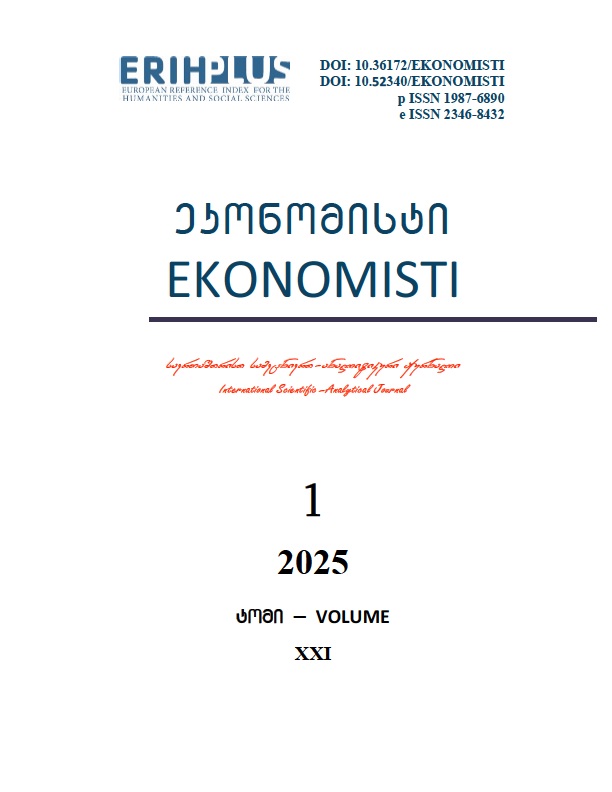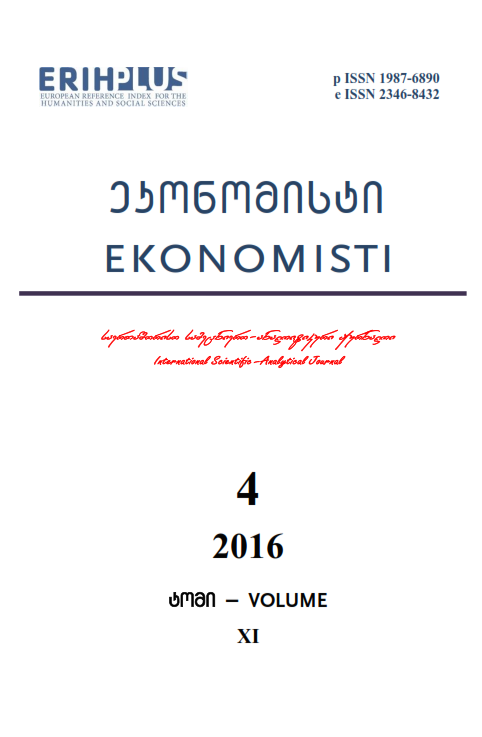
The international scientific and analytical, reviewed, printing and electronic journal of Paata Gugushvili Institute of Economics of Ivane Javakhishvili Tbilisi State University

Dynamics of Government Debt in the World and in Georgia and associated Challenges in the Context of Global Monetary Policy Tightening
Expanded Summary
The paper aims to evaluate current trends in public debt around the world, including Georgia. The paper assesses historical background of public debt and the main drivers of borrowing from past centuries to this time.
Until the mid-17th century, the mobilization of credit resources by the government was mainly carried out to finance military operations (Stasavage, 2011). From the middle of the 17th century, as a result of the Peace of Westphalia, a relatively peaceful period has established between the European states, and from this period purpose mobilization of credit resources were significantly changed (Yun-Casalilla, O'Brien, 2015). This tendency, on the one hand was caused by the strengthening of state institutions, and on the other hand, by the increase in the demand for public goods due to growing urbanization. As a result, from this period instead of financing wars, public services (water pipelines, road infrastructure, education, etc.) were more actively financed with credit resources.
In addition to the regular financing of public goods, in the 1900s, the debt level was used to increase significantly during periods of war and economic/financial crises. It should be noted that the dynamics of government debt prior to the 1970s is somewhat consistent with Keynesian countercyclical fiscal policy. However, since the 1970s, it is more consistent with the theory of "Half-Keynesianism" offered by Buchanan (Tempelman, 2007). In particular, from the mentioned period, the ratio of the government debt to GDP was characterized by an increasing trend, which to some extent indicates the non-countercyclical nature of the policy and the government's tendency to overspending. The issue ones again become the focus of almost all countries and international financial institutions during and after COVID-19 crisis.
The recent tendencies show that global public debt to global GDP ratio has reached the historical peak in 2020 and continues going up. In parallel with the significant increase in the aggregate level of government debt, the number of countries whose debt exceeded their own GDP also increased significantly as a result of the pandemic. In particular, in 2020, the number of such countries reached 33 and increased by 18 compared to 2019 (IMF, 2023). It is also worth noting that, compared to 2019, the number of countries for which government debt to GDP ratio was in the [0%-60%] interval decreased significantly from 128 to 95. By 2022, the number of these countries has increased to 106, although according to existing forecasts, a sharp increase in their number is not expected in the coming years (IMF, 2023).
Increased public debt, on the one hand, makes fiscal policy less flexible for countercyclical responses (Sutherland & Hoeller, 2012) and on the other hand, it makes countries to spend increasing amount of financial resources on interest costs, which are unproductive by nature and makes slowdown in economic growth (Stiglitz, 2015). To be more specific, based on 2018 data, for a given weighted average interest rate on a government debt portfolio, one percentage point increase in the ratio of government debt to GDP in developing countries is associated with an average increase of 0.04 percentage points in the ratio of interest expenditure to GDP (IMF; Kose, Kurlat, et al. 2023). In an opposite way, for a given debt to GDP level, increased interest rates make interest costs to increase dramatically. Especially for the countries, which has borrowed most of its credit resource in floating interest rates and current tightening path of global monetary policy affects their interest payments more rapidly.
Despite the fact that government debt of Georgia is historically stable and generally maintained at a sustainable level, the structure of it in terms of interest types has a bit unfavorable characteristics. In particular, about the half of the government external debt in Georgia (by 08.2023) bears floating interest rates. Under this situation, tightening monetary policy globally, makes global benchmarks (EURIBOR and SOFR rates) increase and this effect is transmitted to weighted average interest rate on government debt in Georgia. To clarify, by August 2023, weighted average interest rate on government debt portfolio in Georgia reached 4.7%, which is historical maximum of the last decade (indicator were between 2.5%-3.3% range over the 2013-2022 period).
Increase in interest rates has not only virtual nature, but also makes interest payments increase dramatically. Particularly, in 2024 amount of expected interest costs are more than doubled compared to 2022. The interest costs to consolidated budget revenues has also increasing trend. Namely in 2024 it reaches 6.5% and is going to increase more in coming years. (historically, this figure was in a range of 3%-4%). This trend, like other countries, makes Georgian authorities to spend increased budgetary resources on unproductive interest payments.
The recommended action in this situation is not one time by nature. It is advisable for the government debt managers in Georgia to review the existing policy of credit resource mobilization and gradually increase the share of fixed rate loans in the debt portfolio to avoid unexpected fluctuations in interest costs over credit cycles. Revision of the policy, on the one hand, will contribute to fiscal sustainability, and on the other hand, it will allow the country to make interest expenses more predictable and use the სავედ financial resources more productively.

